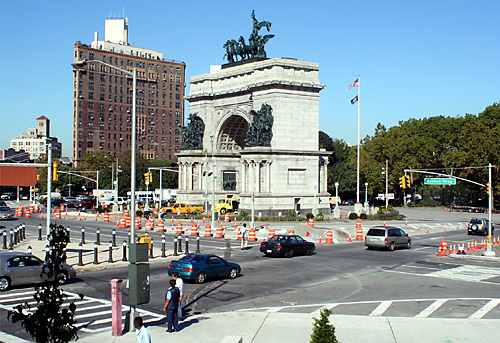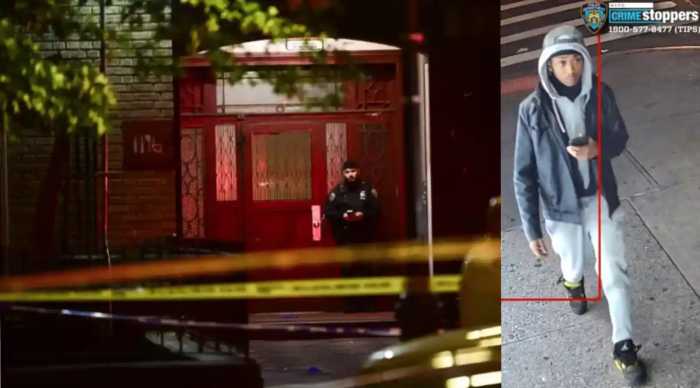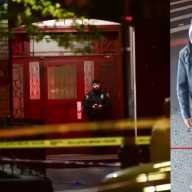The city started work last week on a master plan that could transform the dizzying chaos of Grand Army Plaza into a well-engineered traffic circle worthy of Western Europe, by taking 11,000 square feet of street space and giving it to pedestrians and cyclists.
The “Big Dig” was cheered by traffic activists as “a great first step in the right direction.”
“The changes are really indicative of how much the Department of Transportation itself has changed since Janette Sadik-Khan came in as commissioner,” said Aaron Naparstek, a member of the Grand Army Plaza Coalition, which has lobbied — and is still lobbying — for a more radical transformation of the so-called “Circle of Death.”
At Grand Army Plaza, the main entrance to Prospect Park, cars from nine roads converge and then move in a counter-clockwise direction.
That’s all well and good for drivers, but activists have long complained that the crosswalks are illogically oriented and unnecessarily dangerous, while riding a bike through the madness is akin to playing Russian Roulette.
The Department of Transportation, under the new leadership of Sadik-Khan, who replaced less-popular Commissioner Iris Weinshall earlier this year, has heeded the activists’ suggestions, even going so far as to hire Chris Hrones, one of the biggest agitators, as her Downtown Brooklyn Coordinator.
And at Monday’s press conference, she shared the stage with GAPCO head Robert Witherwax.
As part of DOT’s new $400,000 plan, which should be completed by Thanksgiving, the city will build three large, landscaped pedestrian islands, five crosswalks, 10 new pedestrian signals, and a protected bike path.
Meanwhile, drivers entering the plaza from westbound Eastern Parkway will have to make do with two lanes instead of three, and a dedicated right turn lane will be added to Prospect Park Drive for those vehicles turning onto Eastern Parkway or Flatbush Avenue.
“This new construction will provide a separated bike lane and safe crossing connections so that cyclists and pedestrians can easily access the arch, the fountain and the neighborhoods around the plaza,” said Sadik-Khan.
Naparstek effusively praised Sadik-Khan, though he cautioned that more work remains. GAPCO has a far more radical vision for the Plaza — one includes getting rid of rush-hour traffic through the park, eliminating the roadway that connects Union Street to Eastern Parkway, making Prospect Park West and the part of Flatbush Avenue that runs through the circle into two-way streets.
That vision just won the organization an award from the Design Trust for Public Spaces.
“There are still a lot of problems, and GAPCO is still building community consensus and working towards a longer-term vision,” said Naparstek.
But with GAPCO’s man in DOT, that vision has a better chance of success.
After all, when former GAPCO coordinator Hrones arrived for his first day of work at the Department of Transportation, there was a letter on his desk urging a radical transformation of Grand Army Plaza.
He had written it to his predecessor days before taking office.























